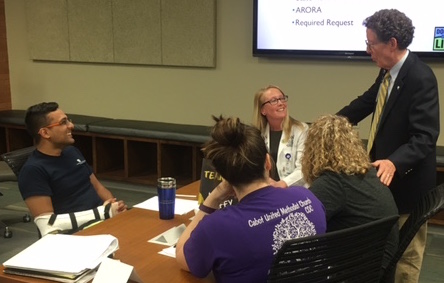
. . . it is a safe rule to have no teaching without a patient for the text, and the best teaching is that taught by the patient himself.
Sir William Osler
New York Academy of Medicine, 1903 in Fiddes, Brooks, & Komensaroff, 2013

. . . it is a safe rule to have no teaching without a patient for the text, and the best teaching is that taught by the patient himself.
Sir William Osler
New York Academy of Medicine, 1903 in Fiddes, Brooks, & Komensaroff, 2013
In the past few years, the need for health professions students to receive training outside of their traditional, disciplinary, “silos” has been recognized by organizations including the Josiah Macy Jr. Foundation. Although there are a growing number of interprofessional programs in health care education, very few actively involve patients and families as educators. Two exemplar programs are profiled, the University of Arkansas for Medical Sciences and the Universite de Montreal. Links to tools from each program are provided.